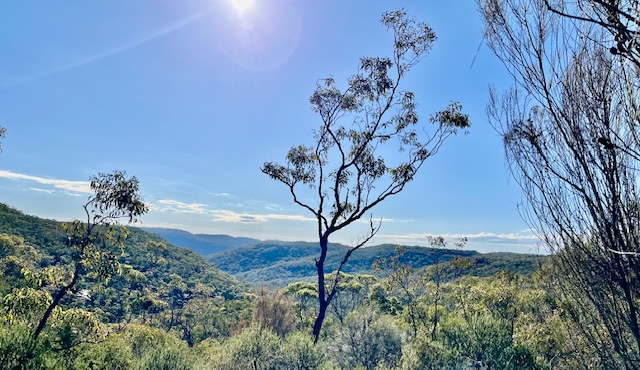
Hiking is something I like to do evey week, though sometimes it doesn’t always happen. Here’s my account of my latest adventure hiking Ku-ring-gai Chase National Park on the Shark Rock Ridge Track. I hope you enjoy the read as much as I enjoyed the hike. Discover my hiking experience here.
Hiking Ku-ring-gai Chase National Park – Shark Rock Ridge Track.
- When: 26 June 2024
- Where: Ku- ring- gai Chase National Park, along Shark Rock Ridge Track then continue on to Want Trig
- Weather: Sunny Sydney winters day. Low of 48.3 F (9 C) and a high of 71.6 F (22 C)
- Departure: from Berowra Train Station at 08:40 am and arrived back at the station at 4:00 pm
- Length: 7.7 miles, 12.39 km
- Elevation gain: 1,066 ft, 325 m
- Duration: 5:40 hours, plus breaks
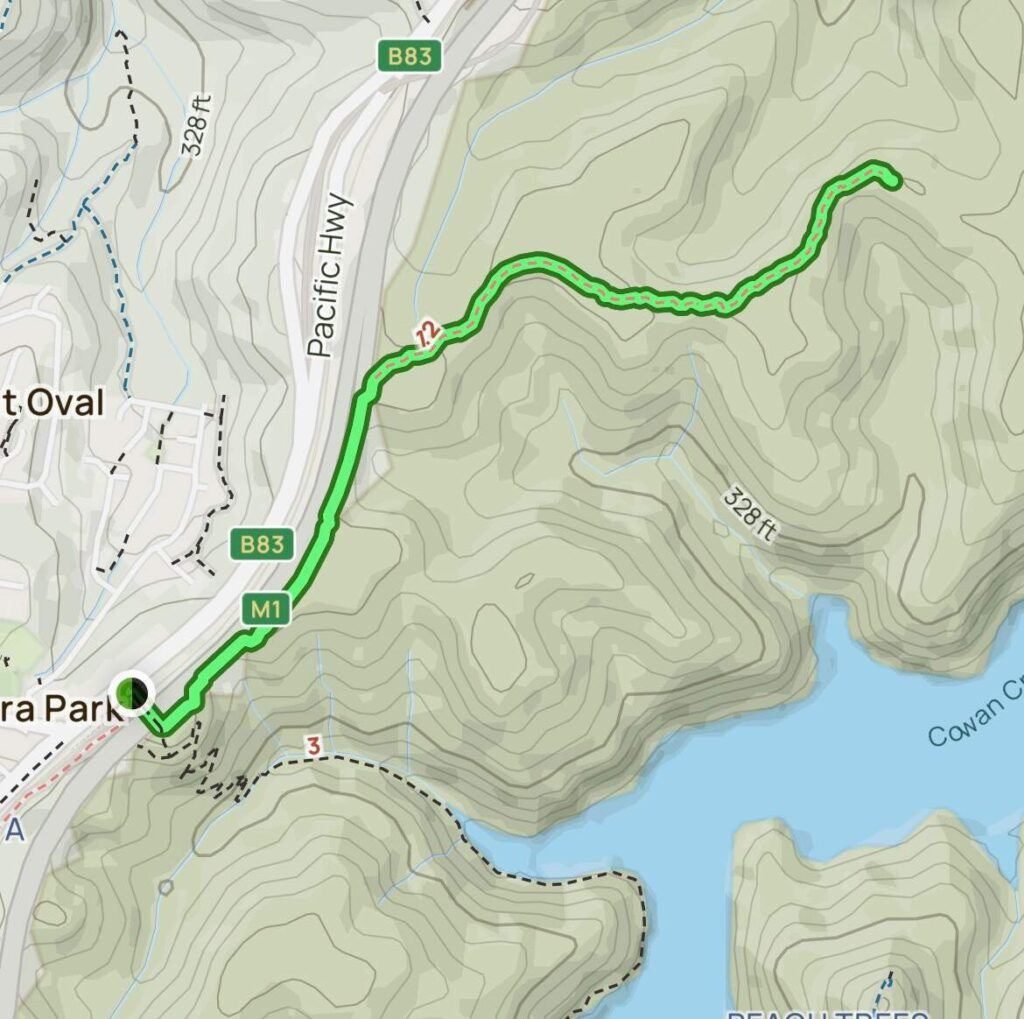
Abundance of Hiking in Sydney
Sydney is a city that clings the coastline, yet is surrounded by National Parks and Nature Reserves to its North, South and West. This walk was in the north of Sydney at the Ku-ring-gai Chase National Park ( 14,882ha) which is Australia’s second-oldest national park. A heritage-listed park, where winding creeks and stretches of ocean meet rainforest and eucalypts, rocky cliffs and mangroves.
The Start
Our group of 11 met at Berowra train station where we set off at 8:40 am for our hike or bush walk. The initial section of the walk involved walking along the Pacific Highway, behind a barrier, for approximately 0.62 miles or 1 kilometre to reach the start of the track. This was unpleasant with cars and trucks whizzing past and stepping over the litter left behind by passing travellers. But! There’s a but here, experiencing the not so pleasant gives you a greater appreciation of the beauty that you see. It’s like feeling the warmth of the sun on a cold winter’s day, or a dive in the cool ocean on a sweltering day.
The entry to the track was overgrown and we eventually managed to find it and saw glimpses of beautiful Waratah Bay. The track, in parts, was overgrown and indistinct and we found ourselves back tracking many times in attempts to get back on the track, spotting cairns to re-assure us we were on the right path. “What’s a cairn?” I hear you ask, here’s a link to an explaination of a cairn. Hey, in my mind, this adds to the adventure!
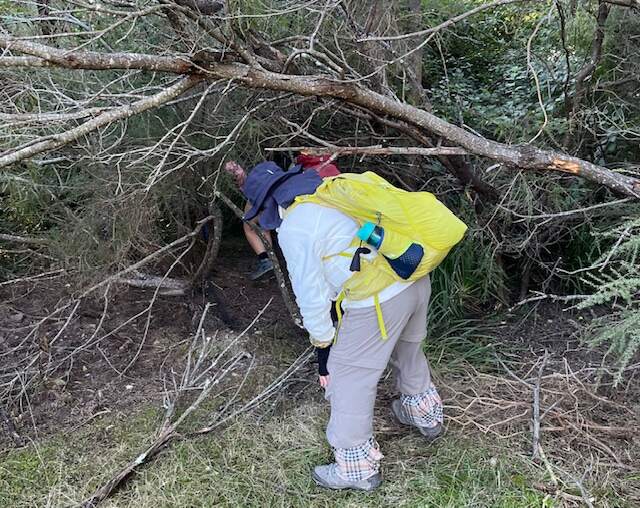
Sighting Ancient Engravings
The walk was along a ridge with undulating ups and downs. After 3/4 of a mile (1.2km) in we spotted our first Aboriginal rock engraving site. There was a kangaroo rat, a very distinct stingray plus emus and wallabies. Further along we sighted a human and a boomerang. Our hike continued over sandstone platforms with interesting rock formations and the odd defiant blossoms and bottle brushes that didn’t seem to mind the winter cold.
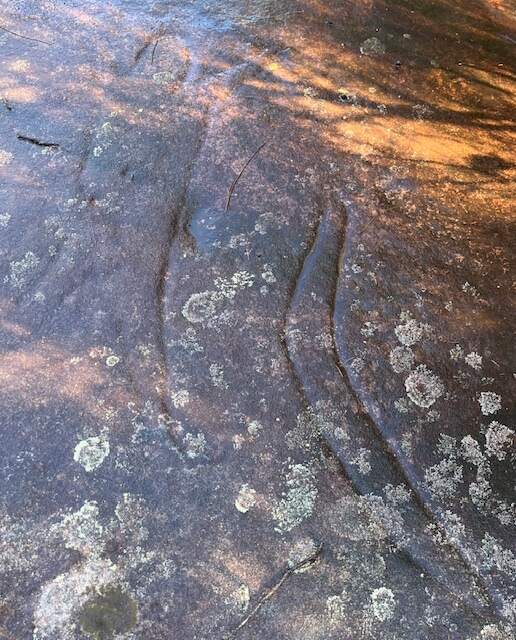
An Unusual Rock Platform
Continuing on for just over half a mile and we reached a huge tesselated rock platform which was an amazing and interesting feature which we referred to as fossilized turtles or nature’s floor tiles. Surrounding the rock platform were many more Aboriginal engravings. The track continued on much the same way with necessary stopping and backtracking to ensure we stayed on route.
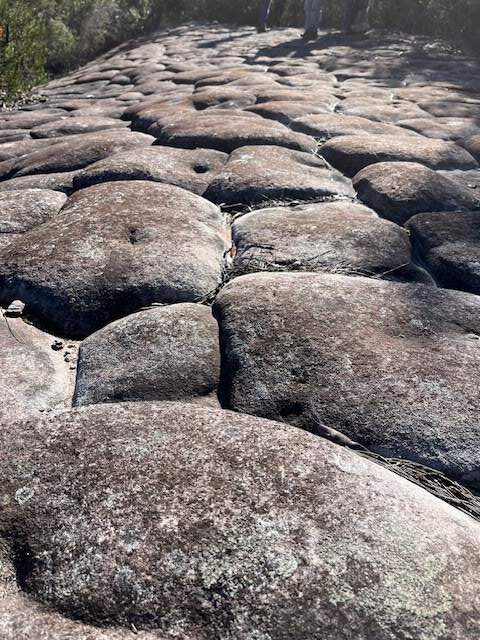
The Decision to Turn Back
Our final destination, after reaching the end of Shark Rock Track, was Want Trig which was to give us glorious views over Jerusalem Bay. We started on this indistinct track and as the going was slow, it was nearing 2:00pm and we hadn’t stopped for lunch, the group made the decision to turn back. We didn’t want to be walking in the dark. I always hike with a head lamp in my pack, in fact I have 2! You never know what can happen.
The route back was the same way as we came. I much prefer to hike a circuit track than re-trace past footsteps but there was no option, this was an in and out hike. We stopped for lunch on a section of rock platform and then made our way back to Berowra Station for the train trip home.
My Highlights
The highligts of the hike were the abundance of Aboriginal engravings and the enormous tesselated rock platform, plus a perfect Bottlebrush which I captured on film for you. Was this the most interesting hike I’ve done? Probably not, plus I don’t like not completing what we set out to do, but I still had an amazing day saw things I hadn’t seen before and was grateful for the company, wonderful weather and the opportunity to follow my hiking dreams.
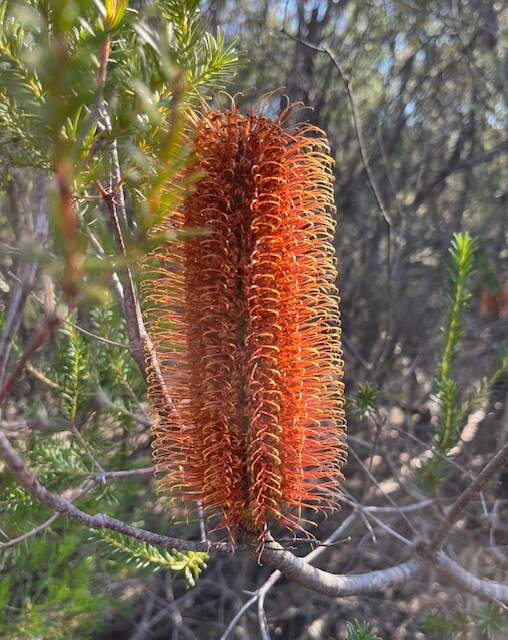
Happy Hiking!
You can leave your questions or comments here.

This is an excellent account of your hike. It’s a shame you couldn’t complete the circuit, but staying safe is always better! I envy you are mingling with Aboriginal sacred Lands signs: I spent a while in the South Australian Desert helping move a group of Aboriginals back to Arnhem Land a few years ago! It was one of the most transformative periods of my life! I’d love to know what your big hiking dreams are. Nepal? Tibet? Tasmania? Or is there plenty to keep you occupied at home? I bet!
Your article about the hiking adventure at Ku-ring-gai is well done. I really appreciated how you highlighted the different points of interest and the tips on where to find the best viewpoints.
You mentioned it’s a moderate difficulty hike—do you think it’s suitable for beginners who are still getting into hiking? Thanks again for sharing this adventure—I’ll definitely be bookmarking your site for more hiking ideas!
Hi Bob, thank you and I’m glad you enjoyed it. I wouldn’t recommend this hike for a beginner, not because of the difficulty but because of the condition of the track and how it was quite over-grown and difficult to find in parts, unless you went with someone experienced who knew the track. On your own, it would be easy to get lost.
I enjoy hiking myself! I’-t’s very interesting that you give renditions of your hiking sessions and what you enjoyed there. Ku-ring-gai seems to be a magnificent place to hike and honestly I thought it was in China in the first place because of the name! Until I noticed that you talked about the Aboriginal people. Thanks for showing us your hiking adventures, and I hope to see more from you!
Hello Lyn
Your article is wonderfully detailed, capturing the natural beauty and the sense of accomplishment that comes with tackling such a terrain. The description of the trail, combined with tips on what to expect, offers readers a vivid picture of the experience. The article’s focus on both the challenges and the rewards of the hike provides a balanced perspective, encouraging both seasoned hikers and newcomers to embrace the journey. The included questions about trail conditions and gear recommendations invite reader interaction, enhancing the overall engagement.